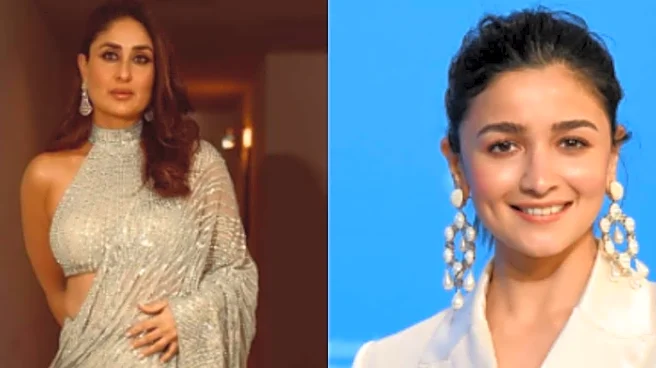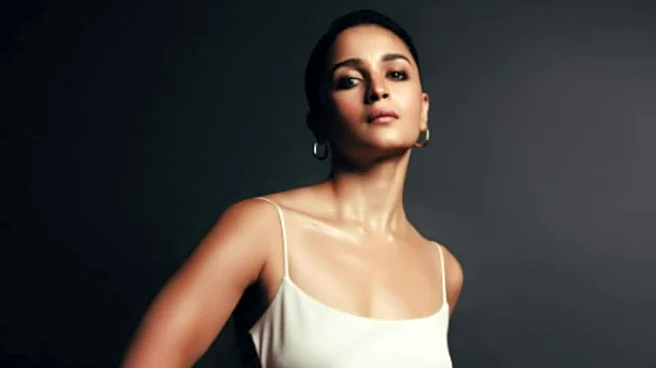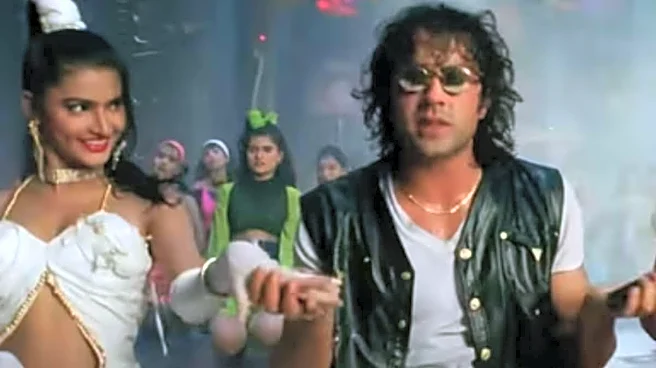Bengal comes alive with the rhythm of the dhak, the fragrance of shiuli flowers, the cool kaash breeze, and streets draped in pandals, twinkling lights, and the scent of crisp new clothes. Amidst this grandeur, the goddess arrives - not just as a deity, but as a symbol of power, transformation, and a few fleeting days of unbridled utsav (celebration). This is Durga Puja, Bengal’s biggest festival and a cultural phenomenon, one that celebrates the triumph of good over evil.Hindi cinema, too, has embraced Durga Puja not merely as a decorative backdrop, but as a living, breathing character - an emotional heartbeat that amplifies stories of love, resilience, and rebellion. From Sujoy Ghosh’s Kahaani to Karan Johar’s Rocky Aur Rani Kii Prem Kahaani and Sanjay
Leela Bhansali’s Devdas, filmmakers have woven the festival into their narratives, using its rituals, colours, and contradictions to mirror the journeys of their characters.
Kahaani – Vidya’s transformation amidst the crowd
In Sujoy Ghosh’s
Kahaani, Durga Puja doesn’t just frame the story - it drives Vidya Bagchi’s (Vidya Balan) transformation. The bustling Kolkata pandals, the crescendo of
dhak, and the swaying processions become her camouflage as she hunts for her husband’s killer. The climax unfolds on Bijoya Dashami: amidst
sindoor khela and the immersion of the goddess, Vidya sheds her fragile façade and reveals her fierce power, taking down Milan Damji. The imagery is unmistakable - like Durga killing Mahishasura, Vidya avenges her personal injustice. Cinematic choices, like framing her from below against the idol, heighten this divine parallel. And when she disappears into the crowd post-victory, it echoes the goddess’s departure, leaving behind the promise of justice and renewal.
Rocky Aur Rani Kii Prem Kahaani – A festival of clashing worlds
If
Kahaani used Durga Puja for suspense, Karan Johar turns it into an emotional battleground in
Rocky Aur Rani Kii Prem Kahaani. Introduced through the pulsating
Dhindhora Baje Re sequence, the pandal glows with red-and-gold hues,
dhunuchi dancers, and the goddess’s towering presence. Rocky (Ranveer Singh), once the outsider, finds acceptance as he joins Rani’s (Alia Bhatt) father, Chandon, in a graceful Kathak. The celebration feels like triumph - until Tijori (Jaya Bachchan) confronts him, and a rift fractures the families. The pandal becomes a symbolic stage: love clashes with patriarchy, tradition collides with change, and Rocky’s eventual choice to stand by Rani mirrors the goddess’s own defiance of oppressive forces. Here, the festival magnifies both division and possibility, embodying Durga’s dual spirit of confrontation and renewal.
Devdas – Between liberation and decay
On the other hand, in Sanjay Leela Bhansali’s
Devdas, Durga Puja explodes with opulence yet conceals deep anguish. The goddess’s arrival fills Paro’s (Aishwarya Rai) marital home with conch shells, vermillion, and rivers of light. The unforgettable Dola Re Dola sequence - sees Paro and Chandramukhi (Madhuri Dixit) dancing in unison, draped in red-and-white saris echoing Durga herself. For a moment, they transcend their rivalry, united in devotion and love for Devdas (Shah Rukh Khan). Yet irony lingers: while the goddess represents liberation, both women remain bound by patriarchy. Paro is caged within her in-laws’ rigid home, and Chandramukhi remains an outsider despite her free spirit. Meanwhile, Devdas drowns deeper into weakness and addiction. Bhansali’s Durga Puja is dazzling but cruelly ironic - the goddess slays demons, but the characters are consumed by their own.
Parineeta (2005) – Lalita’s silent defianceIn Pradeep Sarkar’s
Parineeta, Durga Puja evokes nostalgia while amplifying Lalita’s (Vidya Balan) pain and resilience. The grandeur of Shekhar’s (Saif Ali Khan) household is alive with Kumartuli’s idols, the reverberating
dhak, and the
dhunuchi dance performed by Girish (Sanjay Dutt). Yet beneath the glow of diyas, Lalita’s heartbreak surfaces - her love strained by Shekhar’s father’s patriarchal grip. The visarjan scene crystallises the film’s message: as the idol sinks into the river, so do the lies and misunderstandings clouding their bond. Sarkar’s attention to 1960s Calcutta - the trams, vintage cars, bustling streets - grounds the story in authenticity. But it is Lalita’s quiet strength, echoing Durga herself, that makes the Puja sequences unforgettable.Durga Puja in Hindi cinema is never just decor; it is emotion, metaphor, and mirror. For Vidya in
Kahaani, it is empowerment; for Rocky and Rani, a clash of worlds; for Paro and Chandramukhi, fleeting solidarity; and for Lalita, a quiet defiance. The goddess looms above all, her rituals magnifying human frailty, her triumph inspiring resilience. These films remind us that cinema, like Puja, thrives in contrasts - joy and sorrow, spectacle and silence, tradition and transformation. And just as the goddess departs each year, leaving behind hope, these cinematic depictions ensure her spirit continues to resonate long after the last
dhak fades.

/images/ppid_a911dc6a-image-175902666199065063.webp)


/images/ppid_a911dc6a-image-175877802792295458.webp)

/images/ppid_a911dc6a-image-175893907712381113.webp)




/images/ppid_a911dc6a-image-175900902431322163.webp)




/images/ppid_59c68470-image-175877752664196933.webp)
